Evangelism – The Trojan Horse Of The 1990’s
Evangelism
The Trojan Horse Of The 1990’s
by Wilson Ewin
When it comes to calling people to making a personal commitment to Jesus Christ, well we really don’t have any differences.” So said Sister Macrina Scott. The Roman Catholic nun had trained some eighty counselors for the July, 1987, Billy Graham crusade in Denver, Colorado. Sister Scott was not alone. Priest Donald Willette, from St. Jude’s Roman Catholic Church in a Lakewood suburb, was a supervisor of the 6,600 trained counselors. He reported “there were 500 cards” of individuals being referred to St. Thomas More Roman Catholic church in Englewood from one service alone. |
|
Obviously, the form of evangelism being employed at this crusade was strongly pro-Catholic. The media pointed out that “Months of work between crusade planners and Catholic leaders–behind the scenes–built up a cushion of trust,” and as a result “Catholics were waiting to help Catholics express their new and renewed faith in their mother church” (Rocky Mountain News, July 25, 1987).
What’s Happening?
Has Billy Graham now become an evangelist for the Church of Rome, or does the Denver Crusade rather symbolize a global movement into whose grip most evangelicals are rapidly slipping? The answer comes to any observer of trends that have been developing within evangelism for nearly half a century and which seem to have reached an apex with the Denver event.
One other outstanding feature marked Biblical evangelism. Its preachers and their ministry across the centuries had been true to the Saviour and His Word. Participation by others was neither sought nor accepted. There was no cooperation or association with those who did not share this gospel. This position of absolute separation in evangelism meant the blessing of God upon entire nations and peoples. Countless millions came to know Christ through this form of evangelism. Among the evangelists, those mightily used of God in recent centuries, are found Farel, Knox, Bunyan, Whitefield, Spurgeon, Moody and Sunday.
Then something happened. Beginning some 40 years ago, a Trojan horse was wheeled out and parked on the field of evangelism. It became identified as ecumenical evangelism–the grouping together of believers with the unregenerate in efforts to preach the gospel. Masses of evangelicals throughout the world were charmed and many began to cooperate. The early trend of the 1950’s has now become common practice in mass evangelism.
A major component of such ecumenical evangelism is the Roman Catholic Church, and the man most responsible for the grouping of evangelicals with the Church of Rome is evangelist Billy Graham. Slowly, in 1952 and then increasing the pace of his digression from historical and Biblical evangelism, Graham now openly cooperates with Roman Catholicism. He has become the symbol of cordial Roman Catholic-evangelical relations–an apostle of the movement for participation with Roman Catholics in evangelism. Graham was the initial pioneer and has now become the modern strategist in the whole field of Evangelical-Romanist dialogue, affiliation, and coordinated effort.
The following is a chronological summary of Graham’s early en-dorsement, progressive affinity and current acceptance of Roman Catholicism:
PITTSBURGH 1952
Speaking of Graham’s crusade in that city, the Pittsburgh Sun-Telegraph said of Graham on September 6, “He said he hoped to hear Bishop Fulton J. Sheen at one of the Masses at St. Paul’s Cathedral tomorrow.” He added, “Many of the people who reach a decision on Christ at our meetings have joined the Catholic Church and we have received commendations from Catholic publications for the revived interest in their Church following our campaigns. This happened both in Boston and Washington. After all, one of our prime purposes is to help the churches in a community. If after we move on, the local churches do not feel the effects of these meetings in increased membership and attend-ance, then our crusade would have to be considered a failure.”
NEW YORK 1955
On December 29, Billy Graham met in his hotel suite with Dr. James Bennet and Rev. Jack Wyrtzen. He confirmed his intention of sending converts back to the Roman Catholic Church.
NEW YORK 1956
The Hotel Commodore, New York City, was the scene of a Rally banquet attended by 1100 people. The New York Evening Journal reported on September 18 that Graham said, “Then we’ll send them (the converts) to their own churches–Roman Catholic, Protestant or Jewish.”
SAN FRANCISCO 1957
Explaining the follow-up system of the Graham campaign, Walter Smyth told the San Francisco News, “Even if the penitents are non-Protestant, they are referred to the church of their choice . . . San Francisco is a heavily concentrated Roman Catholic City” (September 21, 1957). The same paper quoted Dr. Graham, “Anyone who makes a decision at our meetings is seen later and referred to a local clergyman, Protestant, Catholic or Jewish” (November 11, 1957).
BONN 1963
The Chicago Tribune reported on June 8, “Graham praises the late Pope John XXIII in Bonn, Germany,” and added, “I admire Pope John tremendously. I felt he brought a new era to the world. It is my hope that the Cardinals elect a new pope who will follow the same line as John. I would be a great tragedy if they chose a man who reacted against John, who re-erected the walls.”
NEW YORK 1963
Graham spoke at a Park Sheraton Hotel breakfast meeting that supported his New York World’s Fair Pavilion. The New York Times of October 25 reported he spoke of increasing cooperation between Protestants and Roman Catholics, and said if Pope Paul asked him to go out and preach the gospel, he would do it. He told how the Roman Catholic Bishop of Sao Paulo, Brazil stood beside him in that city during his 1962 crusade and blessed Graham’s converts as they came forward.
BOSTON 1964
The Los Angeles Times carried the following Associated Press story on August 10, “Boston: Richard Cardinal Cushing, Catholic archbishop of Boston, Wednesday urged Catholic youth and college students to attend the Rev. Billy Graham’s crusade in Boston Garden,” adding, “I am 100% for the evangelist.”
LONDON 1966
The Evening Bulletin of Philadelphia quoted Billy Graham as he began his crusade in England, “I find myself closer to the Catholics than the radical Protestants. I think the Roman Catholic Church today is going through a second Reformation…” (May 24, 1966).
BELMONT 1967
An honorary degree was conferred on Graham by the Roman Catholics at Belmont Abbey College, North Carolina during an Institute for Ecumenical Dialogue. The Gastonia Gazette reported, “Graham noted the significance of the occasion–a time when Protestants and Catholics could meet together and greet each other as brothers, whereas 10 years ago, they could not . . . The gospel that built this school and the gospel that brings me here tonight is still the way to salvation . . . We can talk to one another as Christian brothers . . . ” (November 22, 1967).
ROME 1969
Rev. Charles Dullea, S.J., Superior of Rome’s Pontifical Biblical Institute, recommended Catholics to attend Graham’s crusades in these words, “A Catholic will hear no slighting of his Church’s teaching authority, nor of papal or episcopal prerogatives, no word against Mass or Sacraments or Catholic practice” (Newsweek, June 23, 1969).
MINNEAPOLIS 1969
The United States Congress on Evangelism was held in Minneapolis, September 8-13. Billy Graham was the sponsor and included Roman Catholics in his program. A priest, John J. Okeefe, a Paulist Priest from St. Lawrence Parish, Minneapolis, led the Thursday morning devotions” (The Baptist Bulletin, November 1969).
DALLAS 1972
Explo 72 was co-sponsored by Billy Graham. Roman Catholic Churches and members were invited to participate and did so. Mr. Paul Eshelman, director for Explo 72 said, “Roman Catholics have been involved in arrangements . . . Sisters [nuns] helped with advance registrations; young men studying for the priesthood worked in Explo’s Dallas office.”
Catholic literature was distributed at Explo. It read in part, “True Catholics believe that under the appearance of bread and wine, achieved at the consecration of the mass, the very real body of Christ is present in the tabernacle of their Churches…” (Logos, May-June 1972).
NORTH AMERICA 1973
The North American Billy Graham Crusade known as Kay 72, held a meeting in 1971 and invited Roman Catholic participation. The 240 Catholic bishops meeting in April, 1972, were told by their Ecumenical Relations Committee that Roman Catholic acceptance had been endorsed. Roman Catholics took a very active part in the year-long, broadly ecumenical effort. Billy Graham recommended Catholic books and literature. One, a biography of Pope John XXIII, contained hundreds of pages of that pope’s devotion to Mary and the Saints, worship of the host and trust in the sacraments for salvation. Graham advertised it as “a classic in devotion.”
MILWAUKEE 1973
In Milwaukee on October 21, Graham said, “This past week I preached in a great Catholic Cathedral a funeral sermon for a close friend of mine who was a Catholic and they had several bishops and archbishops to participate, and as I sat there going through the funeral Mass that was a very beautiful thing and certainly straight and clear in the gospel I believe, there was a wonderful little priest that would tell me when to stand and when to kneel and what to do . . . ” (Plains Baptist Challenger, May 1975).
ST. LOUIS 1973
The St. Louis crusade was held by Graham at the end of October. Msgr. John T. Byre said in the St. Louis Review, Catholic Archdiocesan weekly, “St. Louis is fortunate to have the presence of the Rev. Billy Graham. During a Graham crusade the participants are asked to make a decision for Christ. In Catholic circles this is referred to as a ‘commitment to Christ.’ Catholics have little reason to disagree with Dr. Graham as far as the theology of his crusade is concerned. He makes a determined effort to keep them non-sectarian and thus avoids the more controversial issues of the sacraments and the Church.” Some 50 nuns served as counselors and others sang regularly in the choir.
SOUTH BEND 1977
Christianity Today, June 3, 1977, headlined, “Graham Scores at Notre Dame,” in introducing the story of the Graham crusade at the Roman Catholic institution. As was now common practice, Roman Catholics participated in a variety of crusade activities.
MANILA 1977
November saw the Graham Crusade in Manila. The evangelist summarized his impressions in these words, “We didn’t know what to expect when we came here because the Protestant population in the Philippines is very small. But during the crusade we have seen some of the greatest unity among churches that we’ve ever experienced, and we have received marvelous support from the Catholic Church” (Christianity Today, December 30, 1977).
MCCALL’S INTERVIEW 1978
“I am far more tolerant of other kinds of Christians than I once was. My contact with Catholic, Lutheran and other leaders–people far removed from my own Southern Baptist tradition–has helped me, hopefully, to move in the right direction. I’ve found that my beliefs are essentially the same as those of orthodox Roman Catholics . . . We only differ on some matters of later church tradition.”
MILWAUKEE 1978
For Graham’s Milwaukee crusade in August, Roman Catholic Archbishop Rembert Weakland sent a letter to priests throughout his archdiocese telling them they could support the meetings. These gave Graham “some of the most loyal support,” not only in attendance but also as campaign workers. Christianity Today (September 7) reported, “Graham had these Catholic . . . church goers in mind during his sermons . . . At each meeting he repeated a recent statement attributed to Pope John Paul II, ‘The priority of the Church ought to be to evangelize those who have already been baptized.’ He followed this statement at the concluding service on Sunday with, ‘Perhaps many people need to come and reconfirm their confirmation.”
POLAND 1978
The Graham crusade in Poland was sponsored by the Polish National Catholic Church, the Old Catholic Mariavite Church and six other groups. Graham was given full cooperation by the Roman hierarchy including Cardinal Karol Wojtyla, the present pope. One report says, “Before Graham preached in St. Anne’s Catholic Church in Krakow (Pope John Paul II’s city), a priest prayed that God would lead the conclave of cardinals in their selection of a new pope. And in his remarks at Catholic Churches Graham praised the great-ness of Pope Paul VI” (Christianity Today, November 3, 1978). Four of the rallies were held in Catholic churches, and priests participated on the platform with Graham. Also revealed was the fact that “Masses were said immediately before and after the rallies.” Graham taught nuns and priests how to evangelize. A picture taken at the famous Polish Shrine of the Black Madonna shows Graham welcoming pilgrims to the worship of their Virgin. (Decision, February, 1979).
AUSTRALIA 1979
A strong controversy arose prior to the Australian crusade in May when “the crusade Executive Committee announced that inquiries would be referred to participating Catholic churches.”
NEW YORK 1979
American Catholicism’s most famous T.V. star died Sunday evening December 9. Archbishop Fulton J. Sheen won countless thousands to the Roman faith. Newsweek described him as, “Author, and for years the best known Roman Catholic clergyman in America . . . Taught Philosophy for 24 years at Catholic University and served as National Director of the Society for the Propagation of the Faith . . . He was a traditionalist and proud of it . . . As a bishop, Sheen proved obedient to the spirit of Vatican II . . . ” (December 24, 1979). Associated Press contacted Billy Graham that night and the evangelist called Sheen’s death “a great loss to the nation and both the Catholic and Protestant churches. He broke down the walls of prejudice between Catholics and Protestants . . . I mourn his death and look forward to our reunion in heaven” (Nashua Telegraph, December 10, 1979).
Truly, Christians do mourn the death of fervent Catholics like Bishop Sheen. The reason? The Word of God offers them no hope for eternity. But Graham’s sorrow does not come for this reason. It is remorse for the loss of Sheen’s spiritual help in breaking down walls. Graham is left with anticipation–a strange one for a professing Christian–that of spending eternity with Bishop Sheen, an eternity that must be shared by all who die as fervent Roman Catholics. Perhaps Graham’s anticipation will be realized. Eternity will tell.
ROME 1981
Pope John Paul met with Graham on January 13, 1981. Religious News Service reported, “Pope John Paul II was closeted for almost two hours with the Rev. Billy Graham . . . the previous evening, the evangelist visited the North American College, a seminary for Catholic students from the United States, and addressed the student body at an evening service.” Graham called this vesper time “a very inspirational and Christocentric service,” while the papal audience was a “very private, intimate conversation. He (the pope) was extremely warm and interested in our work.”
NEW ENGLAND 1982
Graham prepared for the spring campaign in heavily Catholic territory by a visit to Boston’s Cardinal Medeiros. His Eminence reported the March meeting to be “a discussion of mutual interest and concerns.” This was followed by a strategy consultation on May 25. The Cardinal said, “I was delighted to receive Dr. Graham and a few of his colleagues into my home for dinner”(The Pilot, May 28, 1982). Reporting on this, Priest Conley, Coordinator of Communications for the Archdiocese stated, “The Crusade’s purpose is not proselyting–or sheep stealing–100 priests, religious and laity are being trained to facilitate the full reconciliation to the Church (Rome) of those men and women who will have been moved by Dr. Graham’s preaching” (The Pilot, May 11, 1982).
While in Hartford, Connecticut, Graham admitted “he had sought advice of Vatican officials” (Boston Herald American, May 24, 1982). And each step of the campaign saw the evangelist engaged in consultation with the bishop of the individual state. Following the crusade, meetings took place between the Graham Association and Catholic clergy. People who came forward during the campaign were then transferred back to the Catholic Church. One such occasion took place at Pope John XXIII Seminary in Weston, Massachusetts on the evening of June 9, 1982. Over 2100 inquirers were given priests and nuns.
WORLDWIDE 1983 TO 1988
The story of growing coordination between the Graham Evangelistic Association and Roman Catholic authorities has continued to the present. During this same period, however, a new feature became prominent within Graham’s kingdom of evangelism. It has already created a heavy influence over the whole realm of evangelism and the pace of radical change is accelerating.
Billy Graham has now led his multinational associations into open collaboration with Pentecostalism. In today’s world, no religious movement professing to be evangelical, associates and coordinates itself more blatantly with Roman Catholicism than Pentecostal/Charismaticism. In spite of this, Graham’s current evangelistic thrusts are notorious for their charismatic balance and content. An International Conference for Itinerant Evangelists took place at Amsterdam in 1983. Charisma, a Pentecostal monthly, carried the following story:
“One-third to one-half of the participants were Pentecostal . . . church historians may take years to analyze the significance of Amsterdam 83, but one thing is certain: the event had a definite Pentecostal/Charismatic flavor which seemed to accompany a shift in attitude and terminology from the world’s leading evangelical and his organization.”
The obvious shift pointed out in the October, 1983, Charisma paper was clearly revealed to the July, 1987, North American Congress on the Holy Spirit and World Evangelization. Introduced with much fanfare, Graham said in part, “I thank God for the vital role that your movement is having in bringing about a spiritual awakening in this country . . . My prayers are with you that your Congress will be greatly blessed of God…”
Virtually every existing Pentecostal group was represented in New Orleans for the massive display of unity. Significantly, though not surprisingly, over half of those attending the five-day event were Roman Catholic. This however, became a source of embarrassment on Friday night. It all happened when a speaker decided to make an appeal for salvation.
A PETRIFYING EVENT
Evangelist Reinhard Bonnke was not prepared for what happened, however! In fact, it immediately became obvious that he had just made a grave mistake from the Pentecostal point of view and also from that of the Congress leaders. To Bonnke’s utter amazement, half of those at the Congress stood to indicate they were not saved! And yet for three days these same people had danced for “joy in the spirit,”spoken in tongues and had been previously registered as children of God (because they had been “baptized in the spirit”).
In reality, through his spontaneous invitation, evangelist Bonnke provided true believers with a startling revelation and shocking confirmation. The type of evangelism and the gospel proclaimed by Pentecostalism is a sham! Or, putting it more plainly, the cries of “Full Gospel,” or “Four Square Gospel” or just plain “gospel” that reverberate throughout Pentecostal or Charismatic Movement publications, meetings and programs, are cries coming from those outside the circle of God’s truth. Their gospel is a hoax, for it unites truth with error, darkness with light, and destroys the very wall that separates.
An obviously dumbfounded Reinhard Bonnke again explained that he was speaking of receiving eternal life from Christ. And still, the immense throng of some 15,000 persons remained standing. Asked to explain this situation at a press conference, Congress Chairman Vinson Synan admitted they “were probably Catholics” and “would see this as a kind of renewal of baptismal vows.” Tragically, no attempt was made to show the people that water baptism is not a part of salvation.
In fact, no leader at the Congress explained to the 17,000 Catholics that sacramental grace as taught by their Church is a false grace. No voice came over the sound system to show these same dear lost folk that penance, the Mass, indulgences, and a purgatory can never help to purify the soul. Not a single person stepped to a microphone to expose the daily offering of Christ in the Catholic Mass for what it is–an invention of man and abomination before our holy God.
Certainly, the man who gave the closing address at the Congress did nothing to correct the tragic situation. He was Priest Tom Forrest, a much respected cleric of the Roman Church. How could he? Priest Forrest is obviously an unsaved man and merely confirmed the Catholics in their idolatrous and pagan system.
The priest is a conservative, traditional and faithful servant of the Vatican. He had been asked by Pope John Paul II at the Vatican, and again a second time at Castel Gondolfo to become head of the Vatican’s “Evangelization 2000” program. The priest had spoken in the same stadium the previous year, and at a similar meeting. On that occasion, the Pentecostals called the whole assembly to its feet in an emotional showing of support for the man chosen by “His Holiness” to be head of a massive program of world evangelization.
THE BONDED FUTURE
Obviously, an evangelism die has been cast for the 1990’s. And Priest Tom Forrest symbolizes the depth of Pentecostal-Charismatic-Catholic-Evangelical unity that now exists under the title “evangelism.” Pentecostals, most evangelicals, and many others are locked together in unity with papal forces. And is this not fulfillment of what Billy Graham has said across the years when he repeatedly stated, “Nothing can bring the different Christian groups together as effectively as evangelism can”!
Like mushrooms that appear in a damp forest, global units are springing up bearing the label of evangelism. There is a significant difference between these latter and the biological plants. Mushrooms stand alone as separated units, but the evangelism creatures now appearing in today’s religious jungle are associated, interrelated, and often interlocked.
Whether one views the World Evangelization Strategy Committee, the Paulist National Evangelization Association, Evangelization 2000, National Festival of Evangelization, the Lausanne Committee for World Evangelization, Congress 88-National Festival of Evangelism, International Congress on World Evangelization, or the Total Church Evangelism Strategy Committee, all are intertwined and bear a very prominent feature–that of Roman Catholic joint participation or association.
HOW HAS THIS ECUMENICAL EVANGELISM BECOME SO POPULAR?
Three outstanding factors have contributed to the birth, culture and growth of the evangelism monster now roaming throughout the world.
REFUSAL TO PRACTICE SEPARATION FROM ERROR
The first has been the refusal on the part of evangelicals to observe the Biblical teaching on separation. Instead of following God’s prophets and apostles as they stood “without the camp,” Billy Graham and his countless associates have basked in the warmth of the enemy’s fireplace. For decades, they have willingly allowed themselves to be skyrocketed into a stratosphere of popularity by liberal churchmen, apostate religious leaders, a host of pseudo-evangelicals, and finally, the ruthless heads of International Communism.
SOUND DOCTRINE CONSIDERED DIVISIVE
Secondly, the purifying element of sound doctrine has been deliberately cast aside as being a “divisive issue.” In fact, the gospel of Christ or “good news,” which evangelism is to proclaim, is never clearly defined. The diverse and widely incompatible groups that now combine their motley forces together under the banner of evangelism, would never dare to enunciate what the gospel of Christ really is, and neither would any of them dare to state what the gospel definitely is not. If this were done, their unity evangelism would disintegrate.
This astounding fact has been seen at every Graham congress on evangelism beginning at Berlin in 1966 and continuing up to those in Amsterdam in the 1980s. the same is true of every other evangelism campaign that Graham blesses.
“And then came Vinson Synan’s astounding reply, “Well, we don’t have time to do that!” No time for the gospel itself, but plenty of time for the “evangelism” of the ecumenical unity!”
New Orleans 1987 was a classic picture of the awful sea of doctrinal confusion in which evangelicalism is now engulfed. And sadly enough, the same tragic consequence of doctrinal neglect is also to be found increasingly within fundamentalist ranks as well.
The Friday night experience of July 24, 1987, that revealed half of the audience to be unsaved, was raised at a press conference the next day. Dennis Costella of Fundamental Evanglistic Association, questioned Congress Chairman, Vinson Synan in these words:
“Wouldn’t it seem that something as major as the definition of the gospel itself and what effects or what brings about the conversion of a lost soul to where they are saved, if there is that much difference and misunderstanding among Catholics and Protestants at this Congress, wouldn’t it be crucial to have, not just a workshop, but a plenary session so speak definitively as to what the gospel is, so there isn’t this confusion?”
Mr. Synan replied, “Well, you know, it took me 52 years to come to my understanding of what Pentecostal theology is. And it probably took Dave (Sklorenko, Roman Catholic director of the Congress) 48 years to understand what his is. We can’t in one night get a crystal clear understanding on the part of everyone, because we come from different traditions.”
TRAGEDY THROUGH IGNORANCE
Thirdly, the Trojan Horse has come through the walls of Biblical Christianity because of the latter’s neglect to study the enemy. The apostle warned that warfare would be the heritage of the believer. He said, “For we wrestle . . . ,” and, “endure hardness, as a good soldier . . . ” But these words have been generally ignored as they apply to the Christian church’s most deadly enemy. This is especially true when the history of the Roman Church is examined. It began as a mere trend in the first centuries, evolved rapidly following the days of Gregory the Great (590-604), and emerged in its present form with the binding decisions of the Council of Trent (1545-1563).
The ignorance of Roman Catholicism on the part of evangelicals is virtually complete. Similarly, the picture of this same ignorance among fundamentalists is most disturbing. The writer made an observation of this during his first sermon in November, 1950. He was speaking to an audience of fellow classmates from a homiletics class at London Bible Institute. The startling phenomenon of those days has become critical across the years.
The situation today has the appearance of being somewhat hopeless. Admittedly, certain faithful men of God are aware of the danger and are actively seeking to educate believers through literature and seminars. The problem, however, lies with the indifferent pastors and leaders of Bible schools and seminars.
FELLOW COMRADES?
Who are the leaders involved in the present global evangelism thrust? First and foremost is evangelist Billy Graham, an intelligent man, knowledgeable, and one who does have biblical training. So are others among his associates around the world. And yet they seemingly cannot distinguish truth from error, nor light from darkness. The Saviour described this in the following words, ” . . . If therefore the light that is in thee be darkness, how great is that darkness” (Matthew 6:23).
The darkness mentioned by the Saviour should be measured by an event that took place in Washington on December 9, 1987. Soviet leader Mikhail Gorbachev hosted 100 “intellectual leaders” at a breakfast reception in the Soviet Embassy. Evangelist Billy Graham was among the chosen few. Why? Outside were 250,000 Jews protesting the agony of those within the slave state of Gorbachev. They were refused permission to see the Russian leader, and some were arrested while Graham was “wined and dined.” Why?
“Apathy, tolerance, neutrality and a concern for the more comfortable elements of scholarship, all combine to produce local church members and graduates who are generally unprepared to deal with the topic of Roman Catholicism.”
A partial answer comes from a Chicago Sun Times story of May 9, 1982. Graham was in Moscow and the paper reported that he “met privately with Georgi Arbatov, head of the state-run Soviet Institute of the United States and Canada. Arbatov also is a member of the ruling Communist party’s policy-making Central Committee. The meeting was more than twice as long as expected.” The evangelist never revealed the content of that three-hour conversation.
Nevertheless, Graham summed it up in these words, “I have met a very wonderful official here.” The roots for this summation were planted during Graham’s September, 1977, visit to Communist Hungary. On that occasion he said to the Ecumenical Council of Churches, “This visit will mean a great turning point of my life.” The visit truly was significant. Graham’s turning has developed into an attitude of cooperation with Communism. He gave a speech in Moscow on May 11, 1982, at a Communist peace conference called “Religious Workers for Saving the Sacred Gift of Life From Nuclear Catastrophe.” Author Alexander Solzhenitsyn, Nobel prizewinner and Russian exile, attacked Graham for “his deplorable statement that he had not noticed the persecution of religion in the U.S.S.R.” (Time, May 23, 1982).
As the Tulsa Tribune said, “The Rev. Billy Graham deserved a trip to the woodshed for seeing what Soviet officials wanted him to see and believing he was witnessing a sample of widespread religious freedom . . . Satan has ensnared Billy Graham in his going to Moscow to address a world conference on religion for peace. Of all places in the world, Moscow has been Satan’s seat in the 20th century, and the two churches in which Graham is to speak on May 9 have been set aside by Satan and used by the atheists who control them . . . Those dedicated to Marxism–Leninism have sought to deceive the West. Graham now joins in that diabolical delusion” (May 19, 1982).
What should be done? The Master Evangelist gives the answer, “Let them alone: they be blind leaders of the blind. And if the blind lead the blind, both shall fall into the ditch” (Matthew 15:14).
Certainly, Biblical evangelism has been betrayed. A Trojan Horse of great deception has penetrated the fortress of truth. It is filled with ” . . . false apostles, deceitful workers, transforming themselves into the apostles of Christ. And no marvel; for Satan himself is transformed into an angel of light. Therefore it is no great thing if his ministers also be trans-formed as the ministers of righteousness; whose end shall be according to their works” (2 Corinthians 11:13-15).
However, the Saviour did say, “Occupy till I come” (Luke 19:13). His faithful servants will continue the work of evangelism. It will be with the message of salvation as given through the gospel writers. Congress Chairman Vinson Synan, criminally, had no time to give this gospel to 17,000 lost individuals at his 1987 Congress on Evangelism. However, God still has true evangelists who will! They are active throughout the world in the work of proclaiming His gospel. To them, the Saviour has given His promise, ” . . . lo, I am with you alway, even unto the end of the world. Amen” (Matthew 28:20).









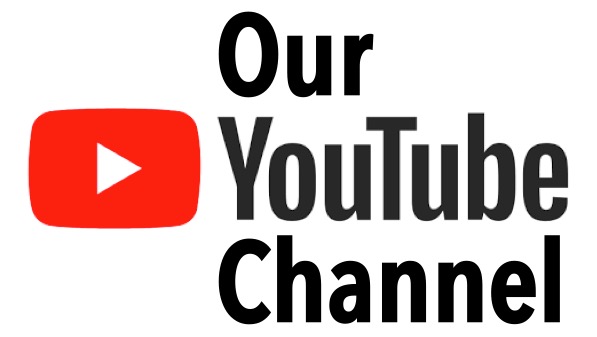
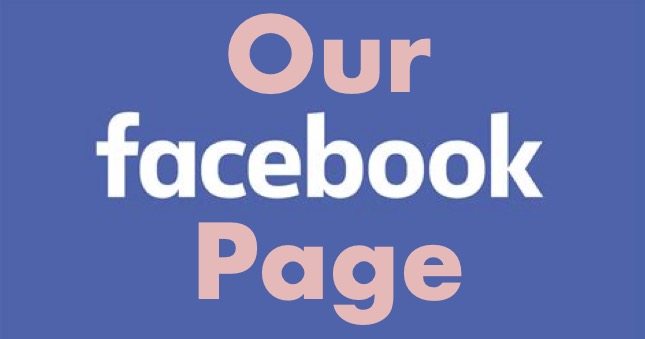


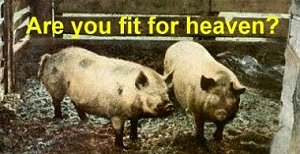



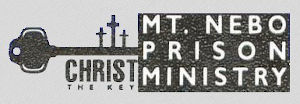
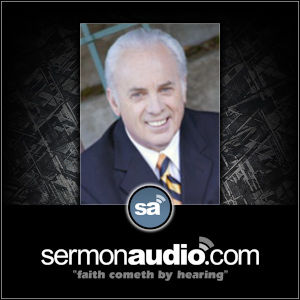
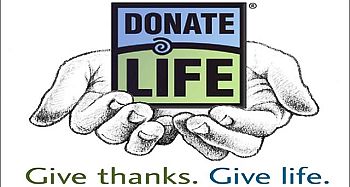

Leave a Reply
You must be logged in to post a comment.